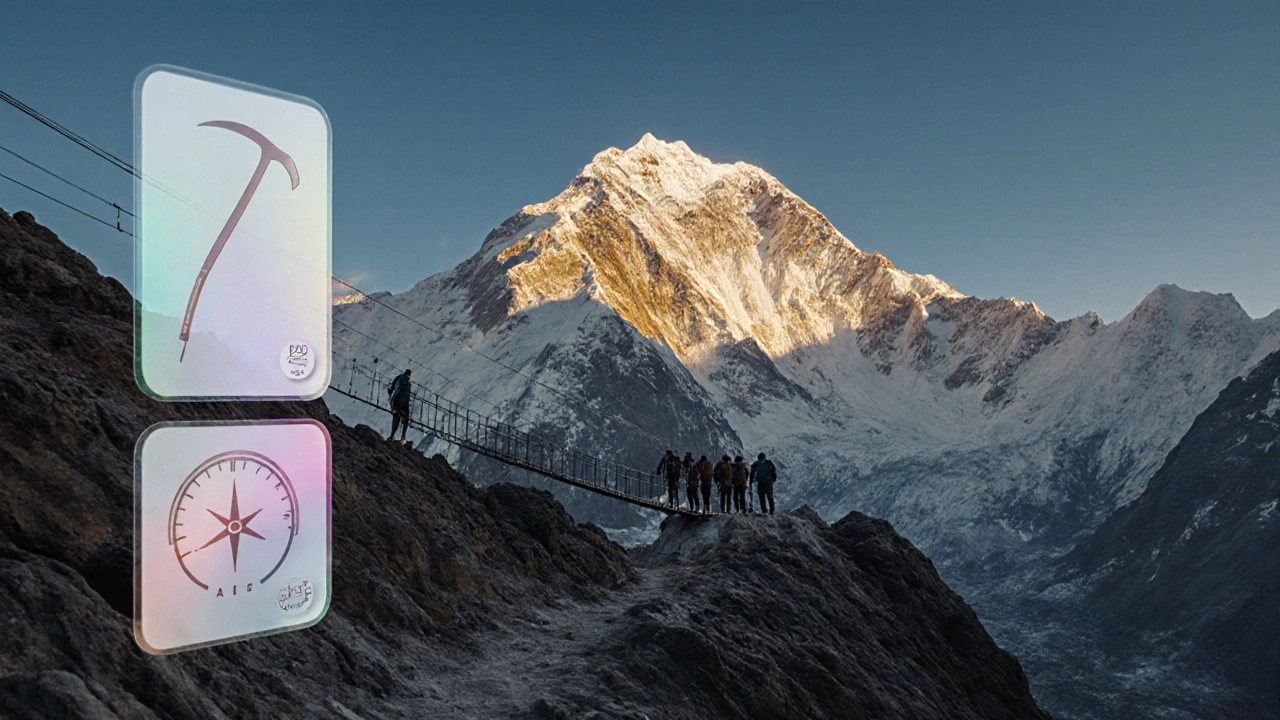SEARCH
High Altitude Climbing India: Peaks, Gear, and Safety
When planning high altitude climbing India, the pursuit of summits above 5,500 meters across the Indian Himalayas, travelers must understand both the thrill and the responsibility that come with it. Also known as high‑altitude mountaineering in India, this activity blends physical endurance, technical skill, and respect for the fragile mountain environment.
One of the first entities to master is the Himalayan peaks, iconic mountains like Stok Kangri, Nanda Devi, and the towering peaks of the Garhwal and Kumaon ranges. These peaks dictate route difficulty, required equipment, and acclimatization schedules. Understanding each peak’s elevation, typical weather windows, and technical sections helps climbers build realistic itineraries. Another critical piece is the climbing permits, official permissions issued by the Indian Mountaineering Foundation or state forest departments. Permits not only legitimize the ascent but also provide vital information on restricted zones, rescue contacts, and seasonal closures. Skipping this step can lead to legal trouble and jeopardize safety.
Altitude sickness, or acute mountain illness, a collection of symptoms ranging from mild headache to life‑threatening cerebral and pulmonary edema, is the third pillar every climber must respect. Proper acclimatization, hydration, and a slow ascent rate are proven methods to mitigate risk. Monitoring pulse oximetry and learning the “climb high, sleep low” principle are practical habits. For many, the final support comes from Sherpa guides, seasoned high‑altitude professionals who handle route finding, load carrying, and emergency response. Their local knowledge of weather patterns, hidden crevasses, and safe bivouac spots can make the difference between a successful summit and a dangerous retreat.
These entities intersect in clear ways: high altitude climbing India encompasses Himalayan peaks; it requires climbing permits; it is heavily influenced by altitude sickness; and it relies on Sherpa guides for safe execution. By mapping these relationships, you can craft a preparation plan that covers gear selection, fitness training, permit applications, medical checks, and guide recruitment. This holistic view reduces surprises on the mountain and maximizes the chance of reaching the summit.
Practical steps start with choosing a peak that matches your experience level. Novices often begin with Stok Kangri (5,600 m) or the Bandarpunch region, while seasoned alpinists target Nanda Devi (7,816 m) or the treacherous peaks of Sikkim. Next, secure the necessary permits at least a month in advance—many offices now accept online applications, but local liaison officers can streamline the process. Simultaneously, schedule a medical check‑up focused on cardiovascular health and discuss a prophylactic plan for altitude sickness with a travel medicine specialist.
Gear preparation follows a checklist that includes insulated down jackets, layered clothing systems, high‑altitude boots, crampons, ice axes, and a reliable communication device. Don't forget a portable oxygen system if you plan to attempt peaks above 6,500 m; many climbers consider supplemental oxygen a safety net rather than a crutch. Packing efficiently and testing all equipment at lower elevations prevents failures when the air thins.
Finally, engage a reputable Sherpa guide or local trekking agency. Verify their certification with the Indian Mountaineering Foundation and ask for references from past clients. A good guide will handle logistics, carry heavy loads, and provide real‑time weather updates, allowing you to focus on your climb.
Below you’ll find a curated list of articles that dive deeper into each of these topics—budgeting for a Himalayan trek, managing altitude sickness, permit application tutorials, and personal stories from climbers who’ve tackled India’s highest roofs. Browse the collection to arm yourself with the knowledge and confidence needed for a safe, unforgettable high‑altitude adventure.

The Hardest Peak to Climb in India - Why Kangchenjunga Tops the List

Explore why Kangchenjunga is considered India's hardest mountain to climb, covering technical challenges, permits, gear, and safety tips for a successful summit.
Continue reading